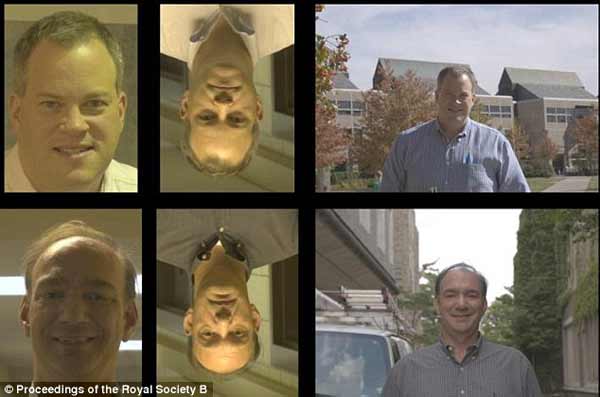
New South Wales, Australia (BBN)-From bartenders to office clerks, experts warn robots are coming for our jobs. But it seems we're not completely replaceable yet.
Researchers pitted trained facial forensic examiners and so-called 'super recognisers' against machines in facial recognition tests, and humans came out on top, reports The Daily Mail.
Using a selection of faces in various poses and positions, examiners were able to achieve a 90 per cent accuracy score where the computers had failed completely.
The machines and humans weren't tested at the same time.
Instead, research leader Dr David White from the University of New South Wales used the results of a 2013 study in which an algorithm was trained to recognise faces.
During this earlier study there was a specific selection of images that the machines got 100 per cent wrong and couldn't recognise at all.
Dr White used these particular images to challenge three groups of participants including a control group, a group of students and a group of trained forensic and facial examiners.
The examiner group was selected from the list of attendees from the Facial Identification Scientific Working Group in May 2014 who said they regularly performed facial examination as a part of their jobs.
The control group consisted of government workers from the same meeting, but who did not perform facial examination in their roles.
The three groups were given three tests in which they had to decide if pairs of images were of the same person.
For some of the tests participants were given two seconds, or 30 seconds, to decide.
In all of the tests, the examiners were able to correctly identify faces, even if they were inverted more, accurately than the control and student groups - and all groups were more accurate than the algorithm used in previous tests.
In terms of value, the researchers said one examiner's skill was roughly equal to two people in the control group or four students.
An increased use of CCTV, images captured on mobile phones and automatic face recognition technology means the comparison of facial images to identify suspects has become an important source of evidence, explained the researchers.
'These identifications affect the course and outcome of criminal investigations and convictions.
'But despite calls for research on any human error in forensic proceedings, the performance of the experts carrying out the face matching had not previously been examined,' said Dr White.
The examiners' superiority was greatest when they had a longer time to study the images, and they were also more accurate than others at matching faces when the faces were shown upside down.
'This is consistent with them tuning into the finer details in an image, rather than relying on the whole face,' continued Dr White.
The study provides the first evidence that these professional examiners are experts at their work.
'They were consistently more accurate on all tasks than the controls and the students,' said Dr White.
'However, it is important to note that although the tests were challenging, the images were relatively good quality.
'This is often not the case when images are extracted from surveillance footage.
The study, which included colleagues at the National Institute of Standards and Technology and the University of Texas at Dallas in the US, is published in the Proceedings of the Royal Society B journal.
It is also worth noting that since the 2013 study, there have been advancements in the accuracy of facial recognition tools.
In Germany earlier this year, computer scientists unveiled a technology that can recognise a person's face and identify them in poor lighting and even total darkness.
It uses a 'deep neural network system' that works in a similar way to the human brain to analyse infrared images and match them with ordinary photos.
This is a new approach to facial recognition, which is used for biometrics, access to devices and social media tagging, for example.
Saquib Sarfraz and Rainer Stiefelhagen from the Karlsruhe Institute of Technology, Germany created a system that uses mid or far-infrared images then matches details with those in ordinary photos.
The experts found their system outperformed the leader in the field by 10 per cent and could match and recognise a face in just 35 milliseconds.
However, there is still a long way to go before police could use the system to catch criminals, for example, because the system has an accuracy rate of 80 per cent when it has multiple visible images of a person to draw on.
When only on visible image was available, the accuracy dropped to 55 per cent.
BBN/SK/AD